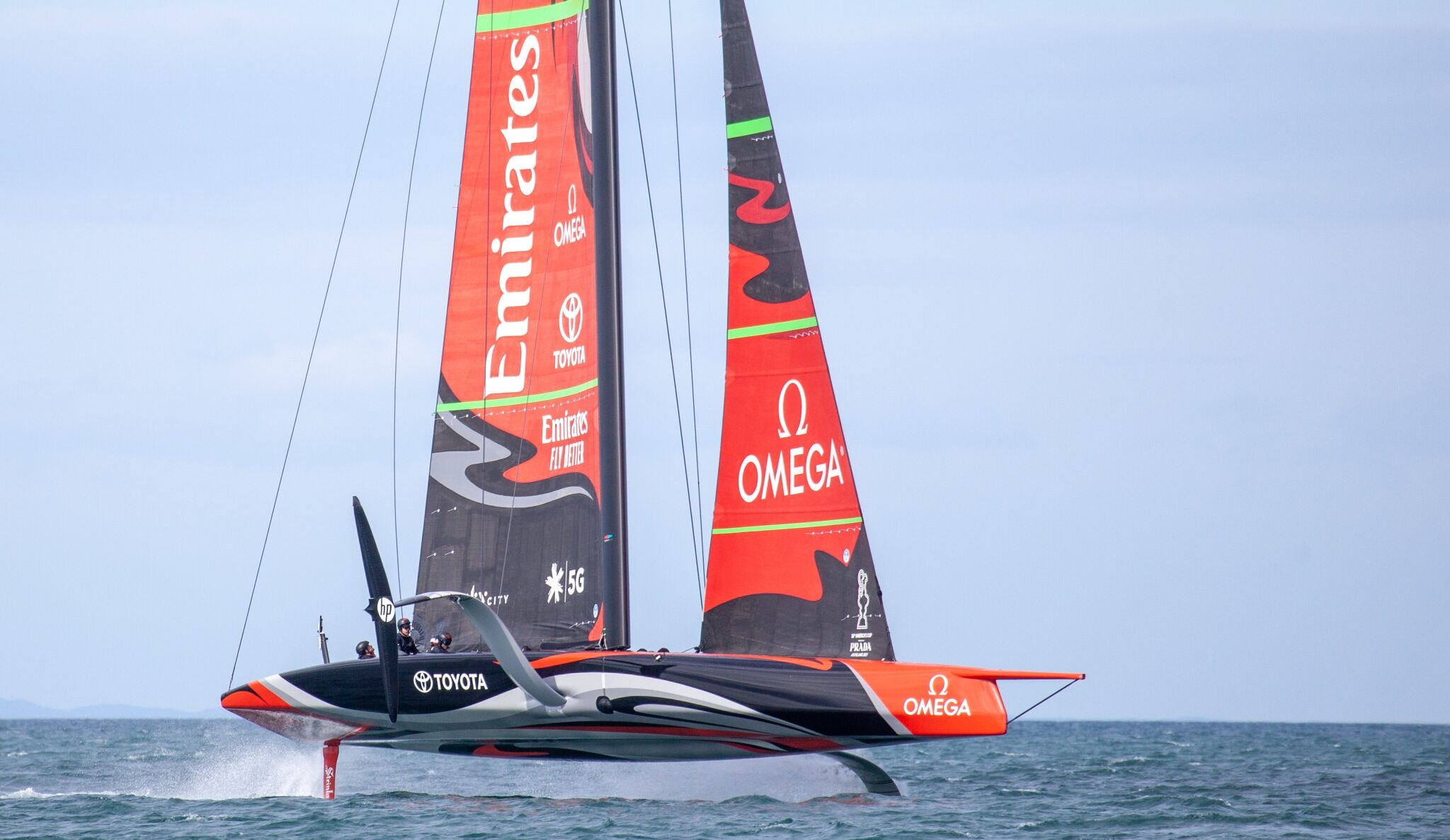by Tony Palladino
Emirates Team New Zealand wins the 36th Americas Cup title with help from AI
In early 2019, Emirates Team New Zealand set out to defend their Americas Cup title. Before building the ultra-expensive racing yacht for the 36th Americas Cup in 2021, the team embarked on a new strategy employing AI technology. For two years, the team worked with their strategic partner, McKinsey/Quantum Black, to develop AI models using Amazon Sagemaker, running in AWS cloud. The team developed and trained AI machine learning models to generate tens of thousands of racing yacht “digital twins” – before they embarked on building the physical sailboat.
May the best design win
The latest Americas Cup 75 (AC75) racing yachts are 75 feet long and 102 feet tall, with special hydrofoils that lift the craft into the air while skimming along the water’s surface at speeds approaching 100kph. The Americas Cup rules allow the teams to design their yachts with the flexibility to make certain modifications, including mods to the hydrofoils. While the fastest physical yacht wins the race, I would argue that the best design model and virtual simulator enables the victory.
The use of simulators is not new. What is new is enabling the simulator to run by itself – tens of thousands of times over, gleaning insights from each virtual race to train itself for the next race. Leveraging a “deep reinforcement learning” technique transformed the AI bot into a professional racing sailor responsible for managing a myriad of variables, including wind resistance, velocity and direction, sail and hydrofoil controls, and many other conditions that impact performance. The AI bot trained itself so well that the human sailors admit learning maneuvers from the machine. During the race, most of the time is spent manipulating the hydrofoils, an act called “foiling”. The goal is for the yacht to fly across the water, such that it is barely touching the water with minimal resistance, without capsizing of course. The race has changed, where mastering aerodynamics has become more critical than hydrodynamics. In the end, it all boils down to physics. Math is the language of physics. AI machine learning can now do the math computations extremely fast and at scale. What took years of learning can now be done in hours.
One yacht, one race
After all of the insights gleaned from tens of thousands of digital twins racing in as many virtual races, Emirates Team New Zealand was ready to build their AC75 racing yacht. Rather than spend tens of millions of dollars on numerous physical yacht configurations, AI machine learning at scale significantly reduced the time and cost of such a massive project. Why build more than one expensive yacht if you don’t have to? Launched in November, 2020, the “Te Rehutai” (translated means “Spirit of the Ocean”) was engineered not to compete, but engineered to win the 36th Americas Cup. In March 2021 it did just that. Mission completed, with the help of AI.
For more details around this amazing AI use case, please go to McKinsey’s website: https://www.mckinsey.com/capabilities/mckinsey-digital/how-we-help-clients/flying-across-the-sea-propelled-by-ai

